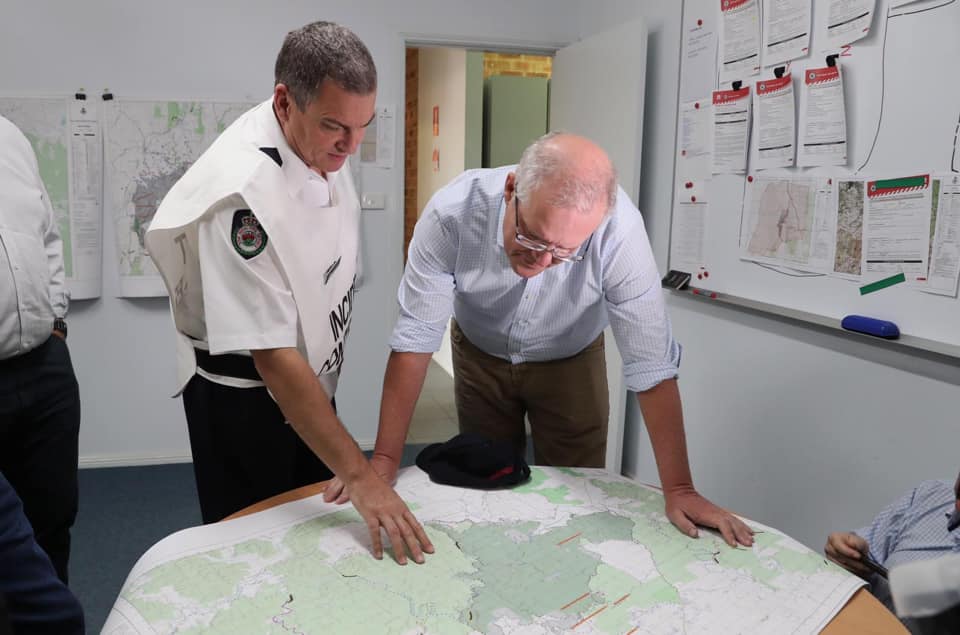On Monday, the Federal Government announced it is committing an additional $2 billion over the next two years to set up a new national bushfire recovery agency. The Australia Institute (TAI), whilst it welcomes the recovery fund, believes the taxpayers shouldn’t be held responsible for footing the bill.
We're putting an initial $2 billion into a new bushfire recovery fund to ensure the families, farmers and business owners hit by these unprecedented #bushfires get the support they need as they recover.
— Scott Morrison (@ScoMo30) January 6, 2020
“Regular Australians should not be forced to pay while fossil fuel producers are being let off scot-free,” says Ebony Bennett, Deputy Director of TAI. Scott-free indeed.
“A modest levy on fossil fuel producers would help to shift the economic burden of these disasters from regular Australians to the coal and gas companies that are fuelling the climate crisis,” continued Bennett.
Let us not forget that Australia famously overtook Qatar as the world’s largest exporter of LNG last November. Surely if a country can use its LNG export profits to bribe its way to hosting the FIFA World Cup, then Australia’s profiteering fossil fuel producers can afford the modest levy TAI are suggesting.
Many, including Labor leader Anthony Albanese, have criticised the Government’s tardy response to the bushfire crisis. But, of course, this is not actually Prime Minister Scott Morrison’s fault as his return flight from Hawaii was delayed due to an extended Happy Hour.
Although, perhaps one of the real reasons the Government initially balked in admitting the seriousness of this season’s bushfires is because it has had its heart set on a budget surplus.
And don't forget the timing of the Bushfire Recovery Fund rollout:
$0.5 billion in 2019-20 (gotta try and protect that promised surplus!), $1 billion in 2020-21 and $0.5 billion in 2021-22.— Matthew Toohey (@TooheyMatthew) January 8, 2020
Evidently, Morrison thought he would look pretty good if he delivered a surplus after a decade of deficits and in the supposed shadow of a looming recession. Of course, delivering a surplus under the threat of a recession makes political sense, people think a budget surplus is an all-round positive thing, but unfortunately, it makes little economic sense.
Nobel Prize-winning economist Paul Krugman famously likened the kind of austerity measures entailed in delivering a budget surplus in a recession to medieval blood-letting. Medieval medical men thought blood-letting, despite the pain, messiness, and threat of infection, was in the patient’s best interest, when in actuality, “all their bloodletting did was make the patient weaker, and more likely to succumb.”
Hence why TAI is not completely satisfied with the Morrison Government’s tardy response and now, perhaps, its clearing the way for excuses to employ austerity measures down the line. The fossil fuel producers have the cash.
“A surplus is just an economic tool,” said Bennett, “not a policy goal in itself, and while we welcome the Government’s change in rhetoric regarding the need for a Budget surplus, it’s disappointing that the Australian community will be left to pick up the tab for yet another climate-fuelled disaster.”
The Government has now acknowledged the link between global warming and more widespread and intense bushfires. That admission, argues TAI, means the buck can now stop, and it needs to stop squarely at the feet of fossil fuel producers. The next step, says Bennett, is to place a modest levy on the companies responsible.
TAI is thus proposing the creation of a National Climate Disaster Fund, financed by a levy of $1 per tonne of carbon dioxide pollution resulting from all coal, gas and oil produced in Australia; someone should remind TAI there are other greenhouse gases emitted by, say, LNG producers.
TAI estimates this levy would raise approximately $1.5 billion a year. Whether the Government would go for such a modest levy is unlikely, but there is no doubt as to whether the initial $2 billion additional commitment is only the beginning. As Morrison told the ABC, “the $2 billion commitment is an additional cost, an initial commitment, and if further funds are required, further funds will be provided.”
$2 billion is only enough to get the Government in the recovery game. A whole lot more is will be required for a recovery of this magnitude, and perhaps, as TAI is suggesting, taking it off the most loaded and culpable players at the table is the best way forward.
This content is protected by copyright and may not be reused. If you want to cooperate with us and would like to reuse some of our content, please contact: editors@pv-magazine.com.









““A modest levy on fossil fuel producers would help to shift the economic burden of these disasters from regular Australians to the coal and gas companies that are fuelling the climate crisis,” continued Bennett. ”
Unless there is (substantial) export of these fossil fuel products, the regular citizen that uses fossil fuels for transportation, heating, remote power using generators will still be stuck with the bill. Is this a trick math problem? Just another political folly?
2B will be just the start of the funding required. Roads, bridges, power lines, private infrastructure and public infrastructure in the thousands of units all require re building. This will take 5 to 10 years to work through/clean up as there are simply not enough trades people to take on the work, and it is not that just one state has been effected. Every state has its huge fires and devastation to rebuild. A levy on the fossil sector is sensible but will be like poisoned ivy to the government, sadly both state & federal.